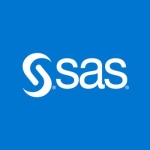What is our primary use case?
We use IBM SPSS Statistics as well as the Modeler. I would say 70% of our work is on Statistics and 30% is on the Modeler.
I'm an independent consultant and my clients have lots of clinical level laboratories. Clinical companies, pharma companies, like Cipla, Biocon, etc. And also logistic companies, like Maersk and Blue Dot. I do the clinical analysis of their data. These companies provide the data and I give them the results. The customer gets the results in whatever format they want. All these companies that I work with also have software other than IBM SPSS. For example, Visual Analytics, SAP Discovery, and solutions like that. So I have to do a liaison with all these other software to fetch the data and present it to the client in whichever format they prefer because there are some features which IBM SPSS statistics has which SAS doesn't have. And there are a lot of features that SAS Visual Analytics has that IBM SPSS doesn't have. So it's a trade-off between these two. I do the liaising with all the partners.
What is most valuable?
The features that I have found most valuable are the Bayesian statistics and descriptive statistics. I use these more often because in pharma companies and clinical hospitals they make the medicines by taking the feedback from different patients. For example, there could be a neuro-disorder patient or a normal IT employee who may be an introvert, confined to his own space and doesn't want to mingle with people or more inclined towards reading books and stuff like that. You have a cross-section of the community. If a patient comes to the doctors with a little bit of mental depression because of the work pressure or anything else, we collect this data, put up a questionnaire to him about his personality traits, why he's feeling depressed, what are the factors affecting his mental attitude and those kinds of questions and we collect that kind of data. Depending on the data we draw a graph and we give a statistical analysis to the doctors, as well.
Then simultaneously, we give this feedback to the pharma companies, so that depending on the data, they determine which medicine they have and what medicine they could develop. That is the kind of work that we do.
What needs improvement?
I understand that we're talking about IBM SPSS Statistics, it's a mathematical tool. Fine. Everybody knows that. It is a statistical tool. Having said that, if they could make it a little bit graphical then people who work on IBM SPSS need not depend on other software, like SAP Lumira or something like that, for the regeneration and graphical image of the entire data. That graphical GUI content should be encapsulated in the SPSS package. That's what I mean.
I know that SPSS is a statistical tool but it should also include a little bit of analytical behavior. You can call it augmented analysis or predictive analysis. The bottom line is it should have more graphical and analytical capabilities.
There are so many formulas which you can encapsulate in this IBM statistical tool. I don't have all the formulas off the top of my head right now, but for any statistical tool for that matter, regardless of the company, it should encapsulate these to the maximum. All the statistical tools and formulae which are taught. I expect that SPSS encapsulates all those formulas, it has a good amount of descriptors, chi-square distribution, ANOVA, etc... you have all the things, but if anything, any theory or formula is missing, I would suggest to SPSS to include that also and market it accordingly so that they can be a front runner in this market, in this segment.
For how long have I used the solution?
I have been using IBM SPSS Statistics for three years.
What do I think about the stability of the solution?
It is a stable solution. There's no doubt. But you know, the stability has to be evolving every day. It's not that today I'm stable. Stability is not static. It is dynamic. My effective operative stability will not be carried forward to future generations without any hassles. No, it's not like that. Every day you have to evolve in the technologies to meet the demands.
As I told you earlier, SPSS still has to mature in terms of fetching data from the high volume data databases, like SAP HANA can.
SAP HANA is a column level database, a columnar database, it's not a low level database. So SPSS has to show that kind of maturity. I assume that they'll scale up because IBM knows how to tackle the market.
What do I think about the scalability of the solution?
In terms of scalbility, it is scalable. There is a scalability fee for this kind of package. The business package can be measured only with the amount of data it can analyze.
Because if I talk about the Oracle database or the RNC database, the measure of scalability depends on the number of notes I can add to the RSE cluster, how much data will my database be able to handle, and what kind of hardware requirements I need. The IBM package is just a normal package. It doesn't have a SPSS package to measure the scalability. There's only one factor, how much volume of data it can analyze at any point of time. Take an example of its competitor, SAS. SAS analytical software has a server called Laser Server, an ASR server, which is capable of handling around 120 terabytes of data at a time.
That kind of thing should be here. I can't assume that SPSS as a front-end tool can assess that much volume of data. Having said that, it should have some kind of work around or a bigger version, just like SAP has given three versions of Lumira Discovery, Lumira designer and business studio. So on the same lines SPSS should have options for a normal user or for an advanced user which can take more amount of data.
How are customer service and technical support?
Their customer service is pretty good. IBM is always customer oriented. I worked at IBM earlier, I know what kind of customer service they have. I worked in IBM at a prior date in India. They're very customer oriented, very customer focused. They don't let their customers down, even if the customer is bad, they'll politely try to resolve the issue. They focus on resolving the issue rather than getting into egos and all that stuff. I rate nine out of 10 on tech support. It's awesome.
Which solution did I use previously and why did I switch?
I'm a pure IT consultant. And in addition to IBM SPSS, I'm also a SAP consultant. I work on SAP Lumira, I work on SAP HANA. I work on SAP S400 material management, logistical management, which includes the SCM MM, PP and the SV modules. I'm also a SAS consultant. I'm a sales, regional medical consultant. I have done the codes in SAS breakthrough modeling. I'm also an Oracle DBA. I worked on almost all the versions of Oracle right from 7.3 to Oracle 18 C. 19 C also, but 18 C is the stable one. So I'm an Oracle Meraki consultant RSE, real application, cluster consultants, and a golden gate expert.
How was the initial setup?
The initial setup is pretty straightforward. Although I'm not an SPSS admin, per se, I was part of the SPSS installation. Basically what happens when you install any SPSS statistics package is a company involves both the admin guy and also the technical consultant who will be working on it so that they can work in tandem and make the installation perfect.
I was involved with the installation team, as well. It is pretty simple. It's not that complex. I think the versatility of IBM SPSS Statistics tool is very evident, it's good. You have the ability to fetch and analyze the different sets of data, whether it is a CSV from a separated value, or other data from the Oracle database, or other older database such as Dbase or redundant spreadsheets like Lotus 1,2,3 or Excel. You have everything. On that count, I gave IBM a nine out of 10. But there are drawbacks too, because IBM SPSS is not able to fetch the data from new databases like SAP HANA or SAP BW HANA. SAP HANA got introduced in 2011, but it became famous more in 2015.
The same is the case with BW HANA, the business warehouse for HANA, and any statistical tool which is not capable of fetching data from this volume, this database. SAP HANA is a numerary database. So any statistical tool which is not able to fetch data from these databases will not be able to sustain itself in the market for long. But yeah, there are some workarounds where people fetch the data from HANA into some of the data sets and transfer the same data set into SPSS to work through the indirect path. But SPSS has to pull up its socks to fetch data from heterogeneous environments, whether it be SAP, HANA or whether it is a MongoDB or anything, any RDBMS, or DBMS on this earth. That kind of flexibility should be there in SPSS.
What other advice do I have?
I would recommend this product. I teach statistics at a college in Bangalore, and I use the IBM statistics, which my students have bought for $29 per month. We use IBM Statistics to learn statistical analysis of data because visualization data is different than statistical analysis. I totally recommend IBM SPSS, even in top business schools, like IAM in India. I went on a guest lecture there and I recommended IBM SPSS to IAM.
On a scale of one to ten, I would rate IBM SPSS Statistics a nine.
I absolutely like the product. That's the reason I recommend all of my students buy SPSS.
Which deployment model are you using for this solution?
On-premises
Disclosure: I am a real user, and this review is based on my own experience and opinions.


















